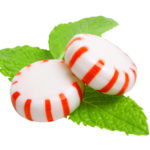
There are many well established ways to combat nausea that range from traditional herbal remedies to modern prescription medications. As I have taught you so far, there are sensory changes that occur during chemotherapy. We need to keep in mind how these changes can cause nausea. Nausea can be the biggest hurdle to combat a loss of appetite. This is because once you have nausea, you will no longer be interested in eating. This results in a missed opportunity for nutrition. Nausea can render the best made dish unappetizing, even if you utilize all of the other cooking techniques I teach you.
Let’s begin by thinking about what can cause nausea. Nausea can be induced by many things, from an imbalance in the inner ear (think spinning around in circles too fast) to the smell of something rotten (hot garbage). Nausea can even be induced by the thought of something gross or the sight of something disgusting. Nausea can manifest itself as dizziness or as a full on puke fest. Because this is Cooking for Chemo, we are going to focus on the things that we can control and that are mostly food and eating related.
As I have talked about previously in this blog, the intensity of a smell is called pungency. In some people, overly pungent smells can cause nausea. In others, they don’t bother them at all. This is of course because everyone is different. I see this all the time in my Cooking for Chemo classes. We will play the Smell Game, pass around ground cumin and I get to have a good laugh watching everyone’s various reactions to the spice. These reactions range from a genuine excitement to a full-on wrinkled “eww” face.
Identifying the Source of Your Nausea
 Nausea affects everyone differently. And what makes it so hard to deal with is the fact that often you will not know where the nausea is coming from. Heck, nausea is a side effect of many, if not all, chemotherapy drugs! So let’s explore how to identify your source of nausea so that we can treat it and avoid it if possible in the future.
Nausea affects everyone differently. And what makes it so hard to deal with is the fact that often you will not know where the nausea is coming from. Heck, nausea is a side effect of many, if not all, chemotherapy drugs! So let’s explore how to identify your source of nausea so that we can treat it and avoid it if possible in the future.
- Play the smell game to identify potential scents (spices, herbs, or food) that are inducing nausea.
Is your nausea induced by a smell like canned tuna? Broccoli? Your spouse’s cologne? Take some time to smell the world around you and document it in a notebook so that you can identify potential offending odors and have them removed entirely. The biggest problem with scents inducing nausea is that they do so from a distance. Unlike metallic tastes, which manifest themselves locally, nausea inducing scents can waft in from a distance and completely remove your appetite.
- Identify whether a pungent scent is what is inducing nausea.
Beyond the actual positive or negative aspects of a scent, are you reacting to the strength of the smell? Cumin is a very pungent, and a quite tasty spice. But if you are sensitive to overly pungent foods or smells, it can induce nausea. Keep track of these pungent scents by writing down how you are reacting to them. Omit or avoid them as necessary.
- Take the correct strength of your nausea medication.
Your doctor will more than likely prescribe an anti-nausea medication. Don’t be “brave”, just take the medicine. Talk to your doctor about your nausea and more than likely they can prescribe a variety of medications that treat a variety of nausea intensities.
When my mom went through chemotherapy treatments, she had two pills she could take: one for moderate nausea and one emergency pill for severe nausea. In the beginning she only took the moderate nausea pill, which was fine, until she fainted in the bathroom and almost died. I’m not stressing the seriousness of this nearly enough. Nausea can literally kill you. So take the correct medication for your current situation. Work with your oncology team to identify the correct time to take each medication.
- Dehydration and hunger can cause nausea too.
Drink your fluids! After my mom almost cracked her head open in the bathroom, (Thank God I was there to catch her!) we had to rush her to the emergency room where it turned out she was extremely dehydrated. A few bags of water later and she was feeling much better. Dehydration is no joke. It can kill you, and it causes all kinds of crazy side effects from inability to move your muscles to full-on hallucinations. This is the same for hunger as well. Our body tells us when it needs nutrients. We have to eat and drink to stay alive. Because our sense associations are all out of whack, it may be hard to identify that you are hungry and thirsty. I know personally, that being hungry for me used to manifest itself as a shakiness in my hands and arms. Now, it manifests itself as nausea and a headache. Your indicators can change, keep notes and work with your caregiver to identify when you need to eat and drink. My wife knows that I need to eat before I even do.
Combating Nausea Beyond Your Prescriptions
 Now that we have been able to identify where the nausea is coming from, here are some ways to avoid or treat nausea that have worked for other people. There are many options for herbal and folk remedies that have been time tested to combat mild nausea. Here are a few of my recommendations that worked for us.
Now that we have been able to identify where the nausea is coming from, here are some ways to avoid or treat nausea that have worked for other people. There are many options for herbal and folk remedies that have been time tested to combat mild nausea. Here are a few of my recommendations that worked for us.
- Peppermint
It is available in tea and candy form. Peppermint has long been used as a folk remedy for nausea. I can say that it does work for mild to moderate nausea. For us, it seemed to be that the peppermint candies or breath mints worked a little better than the peppermint teas. This is most likely because the intensity of the mint is much higher in breath mints than in tea.
- Ginger
A classic sore stomach soother. Ginger, which originated in east Asia, has been in use for thousands of years to sooth a sore stomach. It is available as a fresh root, a dried powder, a tea, or in soda form. Ginger does in fact work for mild to moderate nausea. Be warned in advance though, ginger is in fact a warm spicy flavor, not a mild sweet flavor. It’s warm spicy flavor often takes people by surprise! Ginger can be cooked into soups very easily, and its aromatic quality does change the flavor of many dishes. At first this can be distracting, but as you get used to the new flavor you’ll grow to love its comforting aroma. If you do decide to work ginger into your recipes, fresh ginger root is the best of all the flavors. Remove the ginger root before serving the dish though, as raw ginger can have an overpowering flavor when chewed.
- Sipping Liquids
For mild nausea, a warm cup of soup broth to sip can help to set you right. In addition to this, soupbroth has a caloric value which can be extremely helpful for those having trouble getting necessary nutrients into their bodies. You can also slowly sip water. This can help with mild nausea. Make certain not to quickly drink the liquids. An upset and sudden influx of fluids can cause the inverse of the intended effect and cause you to become extremely nauseous!
- Rubbing Alcohol (isopropyl alcohol)
This is a technique that a post-surgical nurse taught me. When you are extremely nauseous, take a cap full of rubbing alcohol and smell it. Do NOT snort it! Do NOT drink it! But take a few sniffs of the fumes. It will immediately settle your nausea. This technique does not work for everyone, but for those whom it works, it does work extremely well. I can personally vouch for this technique.
- Farting and Burping
Yes, you read that correctly! Often nausea can be induced by expanding gas in your torso. There are only two ways to release it and that is farting and burping. Are they rude? Yes. Can it be hilarious? Absolutely. But these are necessary bodily functions, so don’t worry about being polite and just let ‘em rip. Remember, better out than in!
Techniques to Help Avoid Nausea Entirely
 As the old expression says “an ounce of prevention is worth a pound of cure.” So, is this still true today? While not all nausea can be avoided, here are a few ideas and techniques that you can try to employ in your everyday life.
As the old expression says “an ounce of prevention is worth a pound of cure.” So, is this still true today? While not all nausea can be avoided, here are a few ideas and techniques that you can try to employ in your everyday life.
- Avoid pungent smells.
Pungency is a concept that has to do with the strength of odors. Whereas smell describes the character of an odor. Pungency has to do with the strength irregardless of the pleasantry. For example, roses have a low pungency and it can be hard to detect their scent. Inversely, rotting fish has a very high pungency. Foods that have high pungency can induce nausea more easily than other foods.
- Use soothing herbs in your cooking.
Rosemary, sage, thyme, basil, parsley, and ginger all have soothing scents that can help to keep nausea from occurring while eating.
- Mask pungent smells when necessary.
A great way to mask pungent smells is actually through the palate cleansing technique. Red wine vinegar can actually help to remove the pungent scents that foods like brussels sprouts emit during the cooking process. This can help you to make more nutritious meals while still catering for a loved one’s preferences.
Hopefully these tips and techniques will get you started on the right path to not only combating nausea, but avoiding it entirely.
Chef Ryan Callahan is a 2x Gourmand World Cookbook Award Winning Chef. Author of Cooking for Chemo …and After; Cooking for Kids with Cancer; and Chef Ryan’s How-to-Cook Cookbook. He is also the founder of CookingForChemo.org
Thank you, thank you, thank you